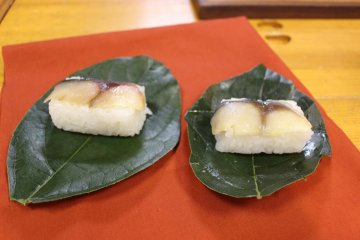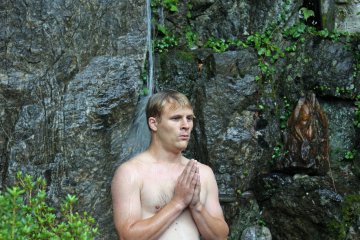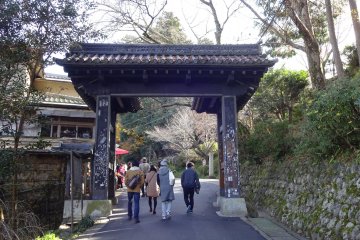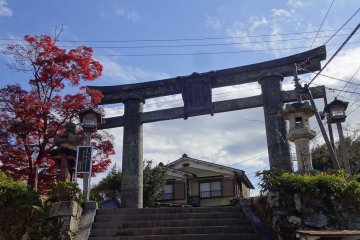For the many Japanese who enjoy the outdoors, nature, hiking and visiting old temples, a popular place to visit in Kansai is Mt. Yoshino, a world Heritage site in Nara Prefecture.
Accessed from a mountain valley, it can be reached by taking a Kintetsu express train either from Osaka or Kyoto or Nara. The final destination on Kintetsu is Kintetsu Yoshino station, after which you can either hike up the mountain road on foot, or take a small cable car to the top of the mountain. The cable car terminus is Yoshino-san station. From there it is but a short walk to reach the temples and hotels scattered around the top of the mountain.
Once you leave the station, head left and walk up a steep incline, you will pass through a Japanese torii or Buddhist arch, and at the top of the hill in front of you is the Niimon gate - the entrance to the largest temples on Mt Yoshino: Kinpusen-ji. Walking up the narrow street (there is only one road so it's hard to get lost) you will see many souvenir shops, old ryokan and hotels.
Some of these accommodations offer day-trippers access to their ofuro. For example, at Yumoto Honoya, a ryokan, you can have a traditional style hot bath and feel relaxed for 1,000 yen.
Walking along the street in many places you can look over the valley which is almost entirely covered in trees (Japanese cypress or “sugi”) and see the occasional temple or rooftop poking out.
Depending on how much time you have and your level of fitness, there are a number of walking courses you can take, and looking from a map you can get at the station, the furthest distance one-way is about 50 minutes. Along the route there are probably about a dozen different shrines and temples and it is possible to spend the night at one such temple. for example at Chikurin-in Gumpoen. Some temples, such as the Zao Do of Kimpusenji Temple, require that you pay an entry fee if you want to enter inside the buildings and visit the grounds. For others, it's possible to go in and stand in front of the prayer temple without paying any money.
Returning to the station is mostly downhill. There are several interesting shops: one is a small but old (>80 years) shop serving traditional green tea and o-mochi, which is a type of Japanese sweet rice cake. The shop serves green tea (mattcha) in a large pottery bowl、and the rice cakes either have azuki (red beans) or kinako (きな粉). The tea set comes to about 650 yen.
The Yoshinoyama area is very beautiful during spring when cherry blossoms bloom in early April, and also when the leaves change color in fall (momiji). These are popular times to visit Mt. Yoshino and hence it can get crowded.
Coming back to the station, I found a place that looked like it was an antique shop, with many old pottery animals displayed outside. Going inside I found some very nice noren curtains, which you can often see hanging outside shops when they are open for business or in front of baths, as I mentioned. The more expensive noren is made of asa (hemp) and is hand-painted with designs of storks, carp, cats, the moon and stars, etc. Other noren are made of cotton and are simply dyed in indigo. Noren can be used to hang in doorways such as in the kitchen, or to divide off the bathroom at home.
To get to Yoshino from Osaka and Kyoto you can take an express train, but if you board the tokkyu trains (usually yellow or orange) you pay an extra express fare on top of the regular fare. From Yamato Saidaiji it was about 1,640 yen in total, and from Kyoto it will be an extra 1,000 yen. If you are not in a hurry the kyuuko takes about 30 minutes from Saidaiji to Kashihara-Jingumae where you change to go to Yoshino. Between these two stations is Asuka, which is where the first capital of Japan was, and it's still possible to see many tumuli and tombs from ancient times. The cable car up Mt. Yoshino is 340 yen one way or 600 yen if you buy a return ticket, and tit akes about five minutes up the mountain. Everything is clearly signposted so it's hard to get lost.











